 | What is Puberty? | | |
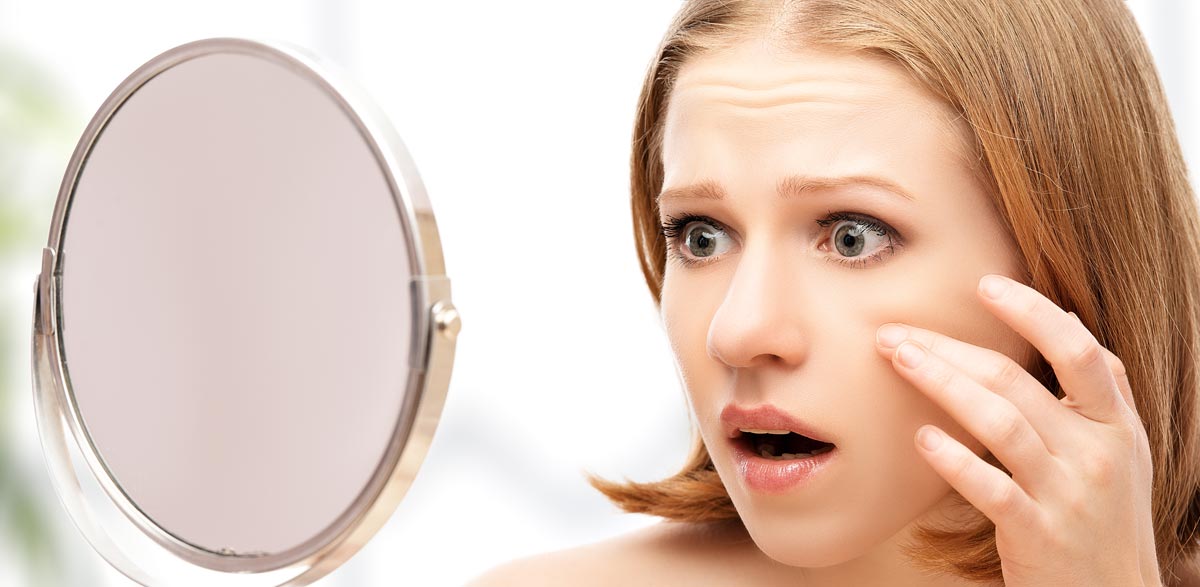
For boys as well as girls, puberty consists of a period of rapid growth when there is a change in body shape along with onset of maturation process of the reproductive system which ends in ability for reproduction. Other significant changes during puberty include development of secondary sexual characteristics such as breasts, breaking of Voice and pubic hair.
All these changes occur gradually over a period of 3 to 5 years. On an average in girls, the period of puberty starts as well as completes before boys.
Following changes take place during puberty.
A growth spurt is experienced by girls between 10 and 12 years and by boys between 12 and 14 years when sudden increase of height, feet size and bone lengthening occurs taking them almost to their adult size.
- The primary sex organs, testes in boys and ovaries in girls become more active and release more sex hormones.
- The secondary sexual characteristics give them features of their adult body and indicate their sexual maturation.
- In girls, breasts start developing, changes take place in their external genitals, i.e. vulva; hair growth seen in arm pits and pubic region and they develop adult like body odour.
- In boys, the secondary sexual characteristics include hair growth in pubic region, face and armpits, increase in the size of the penis and testes, the darkening of skin on the scrotum, and the deepening or breaking of their voice. Boys also develop adult-like body odours.
Acne or pimples on face and neck region may be cause of concern to both girls and boys during puberty till they reach adulthood.
Although the events of puberty occur usually in the same order in girls and boys, the age at which they occur varies enormously, person to person.
Those who experience onset of puberty too early and those who fail to start puberty by 14 years must see the doctor to rule out development related issues.
| |  | Adolescence – Boys and Girls | | |

The word ‘Adolescence’ is derived from a French word meaning growing up.
Adolescence is a transition period from childhood to adulthood, when the entire body changes to biological maturity.
Beginning of adolescence is marked by puberty, when sex glands become functional.
Changes common to boys and girls during Adolescence
During adolescence there is rapid physical change in the body followed by emotional changes.
With change in our bodies, our feelings also change about ourselves, our family and people with whom we come across.
Whether boy or a girl, all these changes are directed to physical, emotional as well as sexual maturity of a person, And when it comes to sexuality, it is ‘normal’ to be different for every person.
Girls usually grow anytime after 8yrs and boys start changing between 12 and 14 yrs. Most changes complete as the person reaches 20 years of age.
Although the speed of these changes varies person to person and varies in each person at different times, there are certain changes common to both boys and girls.
Boys as well as girls grow taller
Both begin to grow hair under arms and around the genital region.
Both sweat more mostly under arms. That is when people start washing more often and use deodorants.
The voices deepen, often more suddenly in boys. In girls it is gradual and takes several years.
| |  | Role of Hormones during Puberty and adolescence | | |
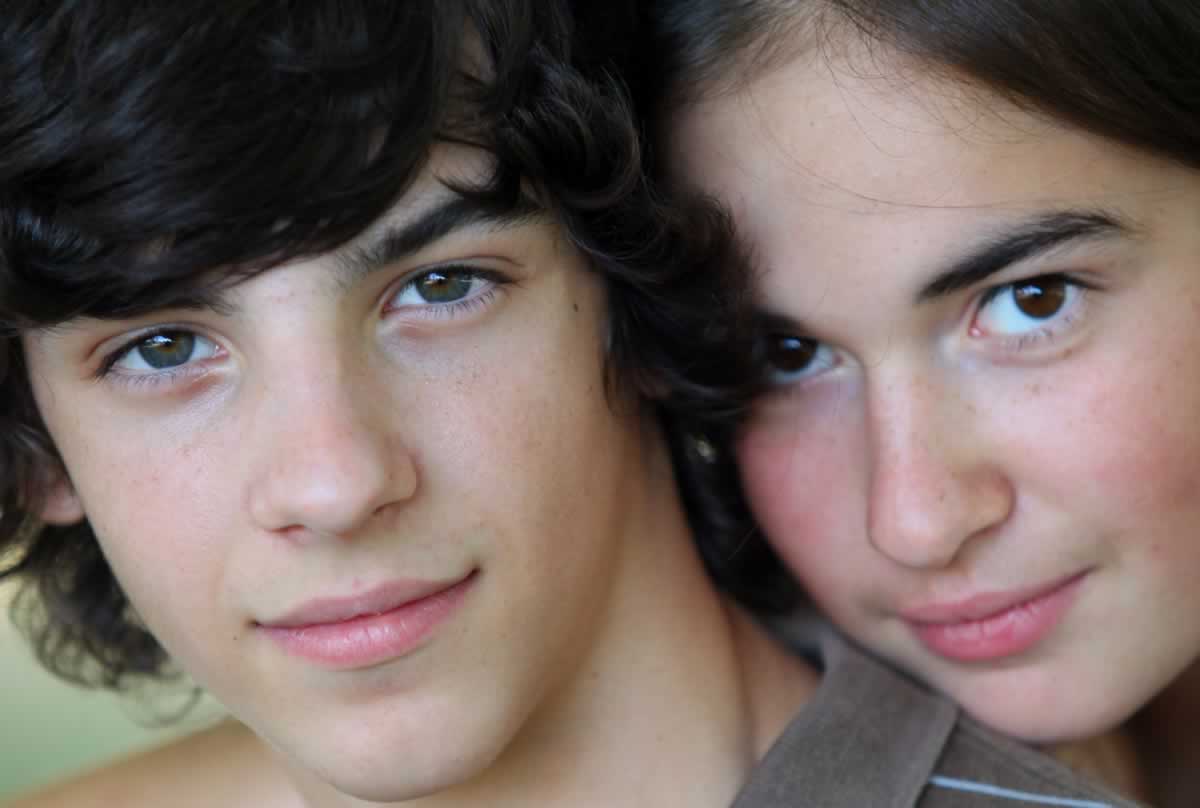
Changes during puberty and adolescence are triggered by chemicals called hormones released by pituitary gland and gonads.
Two of these hormones, estrogen in girls and testosterone in boys guide their growth as women and men.
They also cause some growing pain in arms and legs.
In girls, breasts begin to grow and as their hips get rounder and the waist appears narrower. The vulva and clitoris grows slightly.
Many girls get white sticky discharge from vagina as the sign of puberty
In boys, testes grow bigger and hang lower, often the left one lower than the right one.
The penis grows larger and boys start experiencing erection more often and unexpectedly,
Their voice changes and beard starts growing very slowly
In some boys, breasts become tender and large. This increase in size returns to normal within next year or two
Hormonal changes also cause changes in mood making it emotionally unpredictable.
Boys usually inherit several characteristics from parents like, size of penis and growth of facial hair etc. But the final characteristics are genetically predetermined and unique to the individual.
| |  | The Growth Spurt | | |
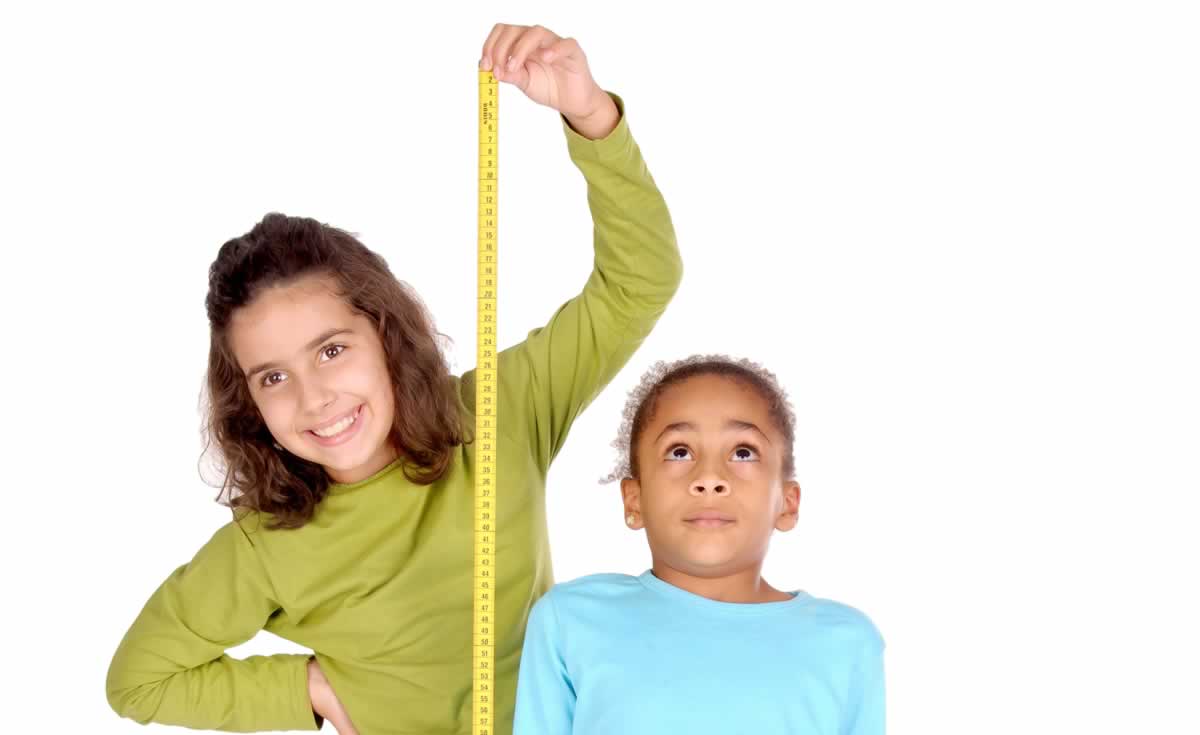
Growth spurt is the period during puberty when sudden increase in height and weight is caused by rapid growth of bones and muscles to reach their adult size.
In girls, in addition to hip bones growing wider, there is deposition of fat under the skin to produce the adult female body shape and in boys, the shoulders grow wider.
In girls, growth spurt occurs between the ages of 10 and 12 whereas in boys growth spurt is seen between the ages of 12 and 14.
During the growth spurt, girls as well as boys grow in height. But, as the growth spurt occurs in girls earlier, they look taller than boys of the same age.
Although growth spurt in boys start later, their growth period is longer and the peak rate of growth is also higher when compared with girls. Therefore, by the end of puberty boys are taller than girls of the same age.
How early in age the growth spurt has started or how fast it occurred does not decide height or weight of a person as an adult. It is also not necessary that child will look like any of the parents in adulthood. Because, the final shape and size of adulthood depends on individual’s own genetic structure.
By adulthood, men have relatively more bone and muscle mass than women, whereas women have more body fat than men.
The growth spurt depends on a number of factors, including the characteristics inherited from parents, the general health of a person as well as nutrition.
These factors will also decide height, weight and the shape person will have as an adult.
Adolescents who feel awkward by sudden growth of certain parts of the body; need reassurance from parents that growth of their other body parts will catch-up in due course of time.
They need to be made aware that bones of the hands and feet lengthen first, then the lower legs and forearms grow, then the thighs and upper arms grow, followed by growth of hips and shoulders. The lengthening of body trunk and widening of the chest occur in the final stage.
Children well informed about how their body grows and changes are less anxious and more confident about their self-image and personality.
| |  | Growing Pains | | |
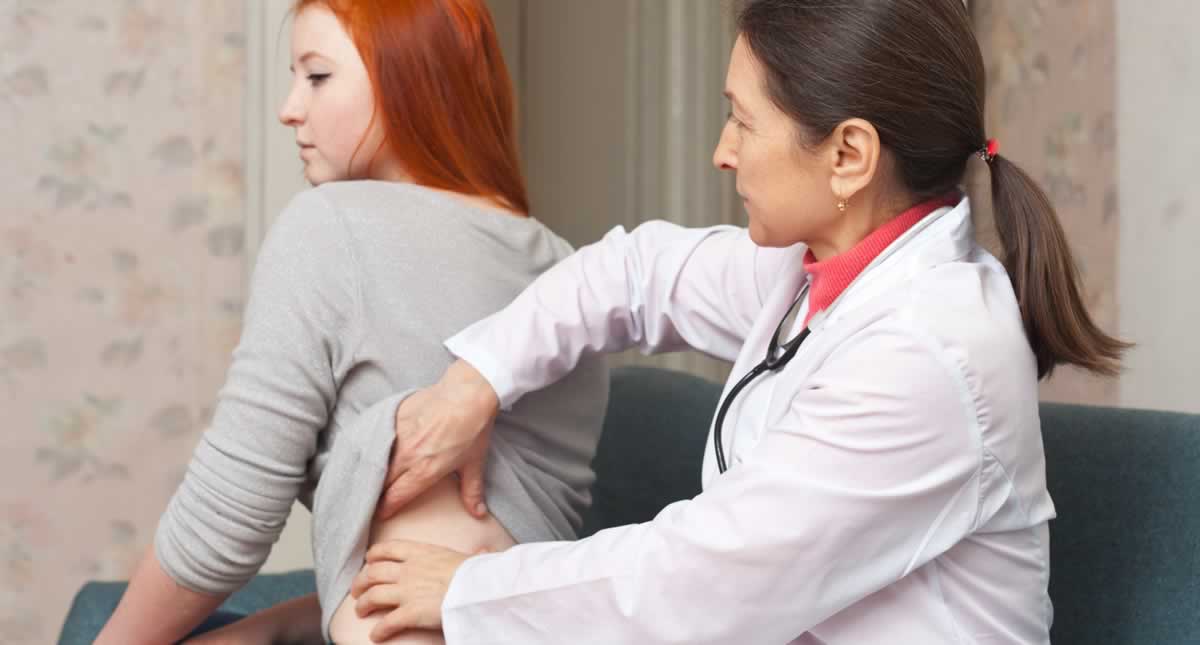
Growing pains are aches that occur in the legs and sometimes the back during adolescents.
Although they occur mostly during rapid growth period of puberty, their real cause is still unknown.
The attacks of growing pains are usually felt at night, lasting for few minutes to an hour.
Medical attention is not indicated for growing pain, unless the child suffers due to repetitive and severe attacks of joint pain and to rule out underlying more serious condition.
| |  | Stretch Marks | | | 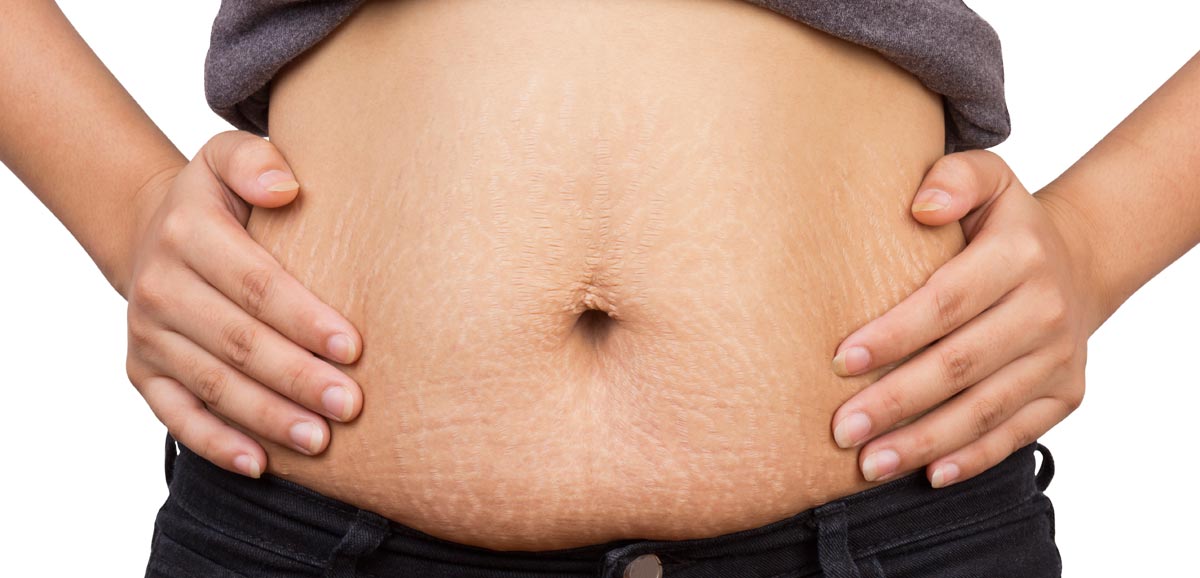
During growth spurt that is period between 10 and 12 years for girls and 12 and 14 years for boys, the body grows faster than other time,
This give little time for the skin to get adjusted to the growing body, thereby stretch marks appear when the skin loses its elasticity.
These are pale lines on the skin surface which mostly fade in time. But, in some, the stretch marks do not disappear completely which is also normal.
Stretch marks are also seen in persons who are overweight persons or in those having hormonal disturbances. | |  | Developing faster than others | | |

Growth related changes occur in a set pattern for most boys and girls, but their onset and how long it may take to complete differs from person to person.
Children feel and respond differently for these changes.
For example, some girls may feel embarrassed or shy if their breasts develop faster than their friends. Whereas, in similar situations, some girls may feel more confident and matured.
In boys the issues are related to getting facial hair, height and voice breaking.
Every boy as well as girl must remember that when they grow up finally they will have a specific appearance unique for them. They may look thin, plump, feminine, masculine, curvy, tall and short. It all depends on characters inherited by them and on genes they carry.
There is no reason to get dissatisfied with our body. Instead, one must appreciate what is good within us and build future around it.
Personality does not depend only on look or appearance of a person. It has lot to do with behaviour and attitude of a person and values they carry.
| |  | Friendship factor during adolescence | | |

Friendship is essential for adolescents to develop an identity beyond the family context.
Friendship helps in continuous experimentation for developing self-image, personal and social life, without parental supervision or influence.
Friends also help in developing social compatibility and overcome vulnerability.
Friends play vital role in strengthening your values and shaping the career.
Good friends are those with whom you comfortably share actions, activities as well as feelings and involve greater degree of commitment.
Friendships do help in solving the issues without imposing their will, which parents cannot.
Friendships during adolescence are often with members of the same sex. These friendships are usually stronger and last longer than those developed during childhood.
Some develop friendships with members of the opposite sex from an early age and continue throughout adolescence.
Others may not wish to develop close friendships with the opposite sex even when they reach their adulthood or treat their spouse as their best friend.
Some friendships may lead to sexual relationship with or without the intention to get married.
Every individual is different, grows differently and has freedom of choosing his or her behaviour.
| |  | Peer Pressure | | |

Most teenagers face pressure from their peers, i.e. friends of the same age.
Friends may induce you to skip school, smoke, take drugs or have sex. Temptations could be for shop-lifting, or driving a vehicle when you are underage or without a driving license or under influence of alcohol.
Adolescence is the age of “trying everything” or “taking risk” without estimating the consequences which may have serious repercussions on entire life.
Adolescence is the age of shaping up, getting experienced and keeping up with time and trends. Yielding to such temptations comes naturally as a sequel of series of actions and activities we follow, even though you may not actually want to do these things.
Finding a friend or group of friends with values you choose to follow, is easy when you believe law of “Like Attracts Like”.
It is better to make deliberate decisions, be assertive and say ‘No’ to doing something you feel is wrong rather than fall a prey to peer pressure and land up in unpleasant situations.
Saying ‘No’ to peer pressure means that those friends drop you, who may not be your good friends. And, once you strongly say “No” to such temptations, such persons will never attract you or come your way
| |  | Care for acne (pimples) | | | 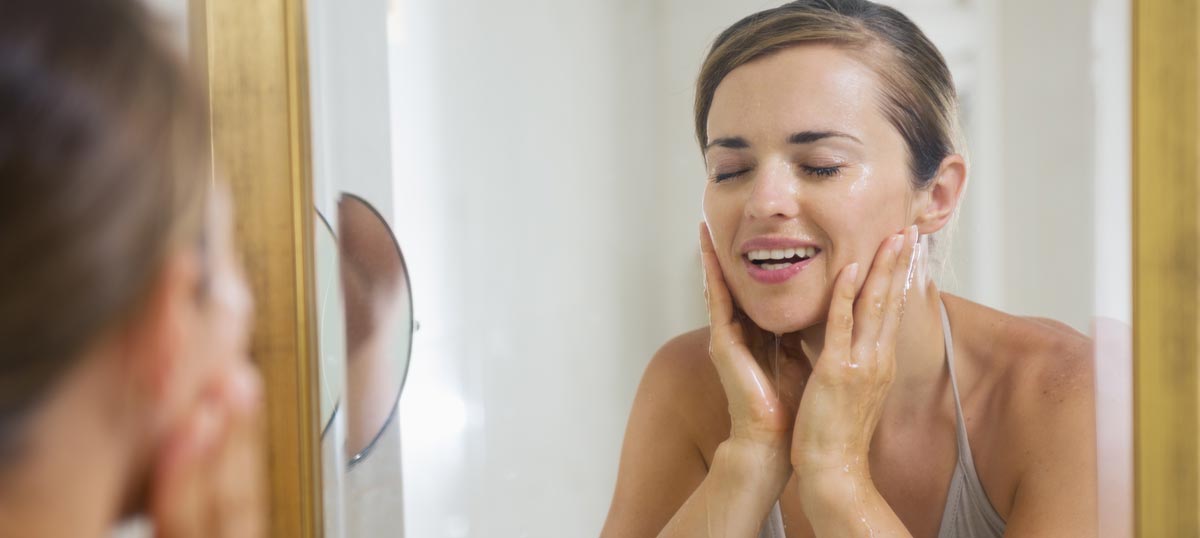
Avoid squeezing of acne to drain the pus because it can spread the infection and make situation worse.
A visit to the skin specialist will be more helpful in recommending local application most suitable for your problem instead of using commercial brands as home remedy.
Educating the child for proper skin care to prevent the spread of acne is also important. If acne persists, a doctor may prescribe a course of oral medicines.
In most cases, acne do not bother after teenage, but for some the problem extends till their late twenties.
Acne that persist for long time may become scarred, which can be prevented as well as treated with modern procedures by skin specialists.
Parents should not shed their responsibility by merely telling their child that acne are sign of their growing up and that they would bother them only for couple of years.
Instead, they should take advice of skin specialist to explain the cause of acne, to guide their child on keeping the skin clean to prevent acne and take suitable treatment when recommended. This will positively help their child to regain self esteem and self-confidence. | |  | Acne (Pimples) | | |
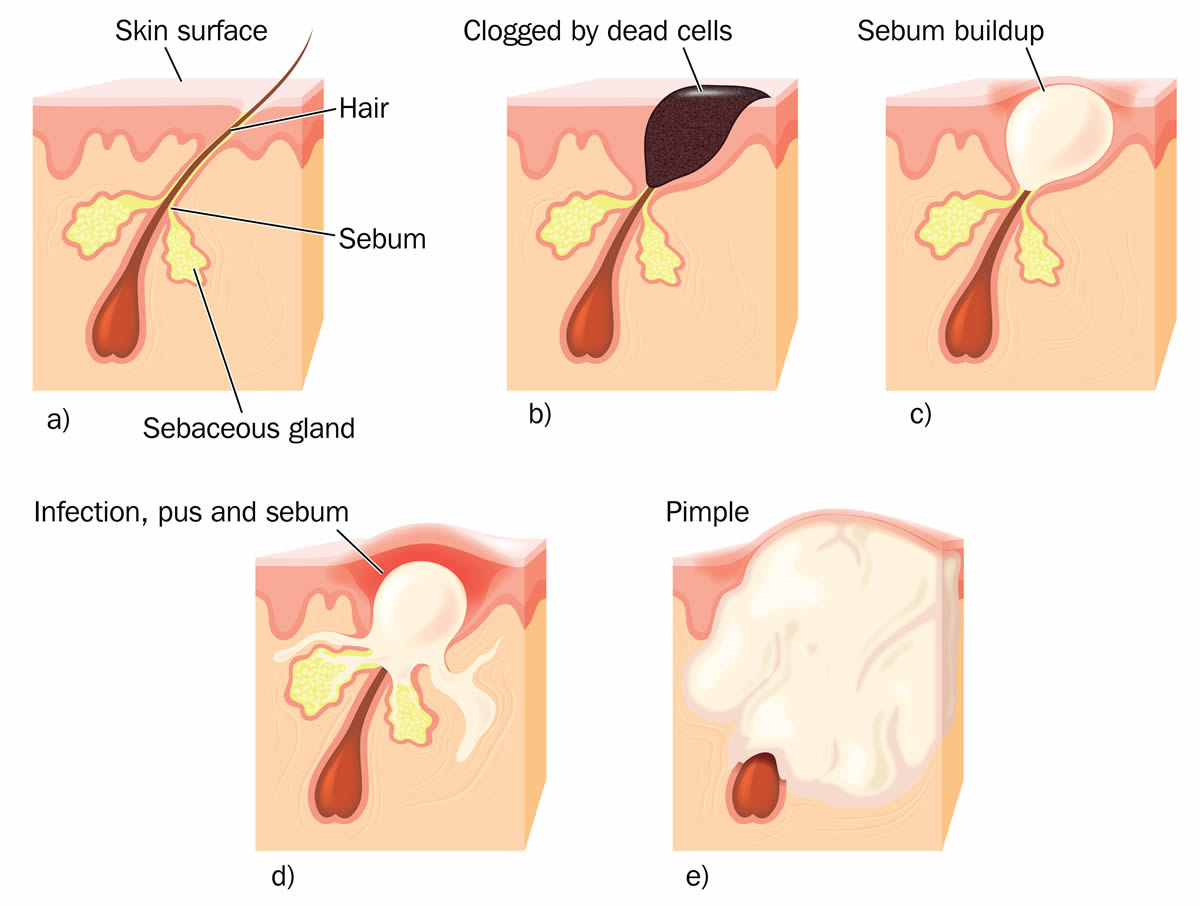
Acne or pimples is a cause of great concern for boys as well as girls between the ages of 14 and 17 because if affects their look and personality, at a time when they want to look more attractive.
Under the skin there are glands, called sebaceous glands, which produce an oily secretion called sebum which lubricates skin as well as hair to keep them soft and waterproof.
At puberty, sex hormones increase the number, size and activity of these sebaceous glands and the sebum becomes thicker.
When the duct from a sebaceous gland to the surface of the skin gets blocked due to dead skin cells or hardened sebum, it swells and forms a pus-filled cyst under the skins’ surface which are called Acne.
Acne are most commonly found on the face and neck, but also extend down to shoulders and back.
| |  | Perspiration – A Hygiene Issue | | |
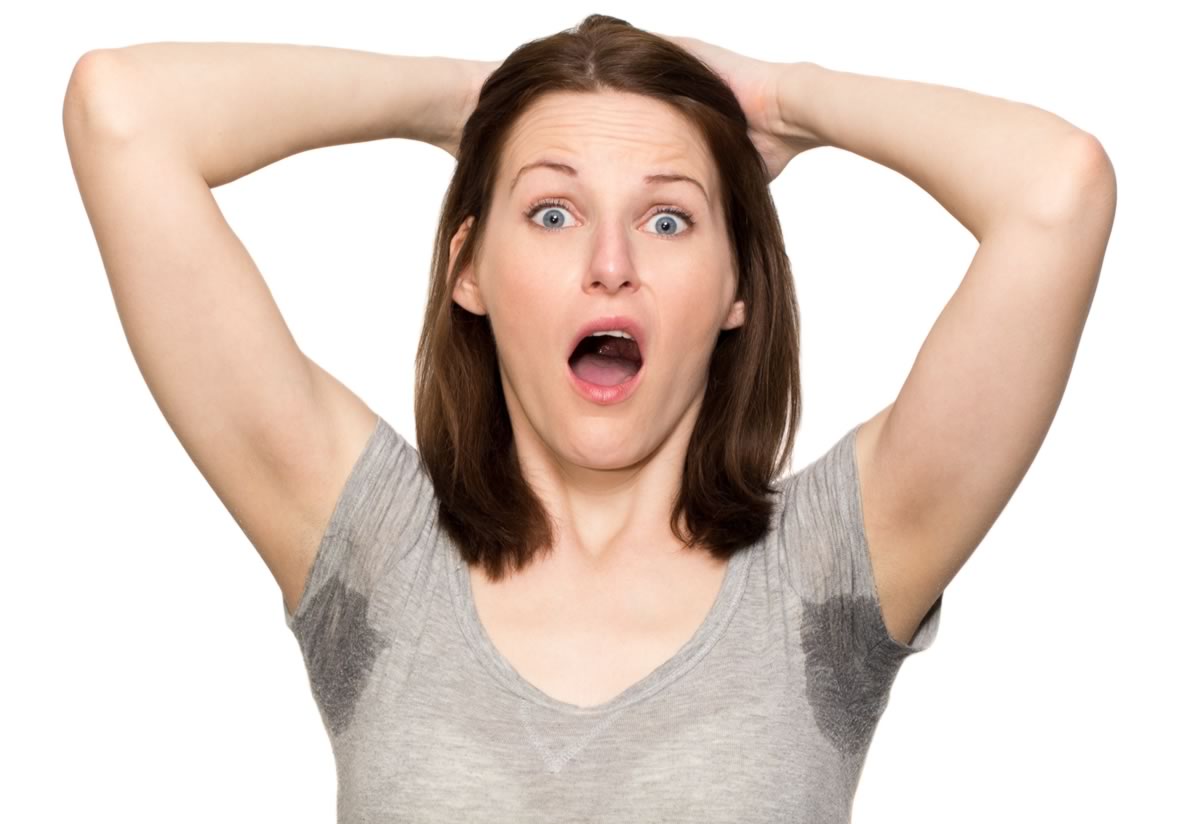
Skin contains sweat glands which release sweat to control our body temperature. Therefore, this sweating is more in hot season than in cold season
But during puberty, another type of sweat gland becomes active.
These glands, known as apocrine sweat glands, are confined mostly to the armpits, the area around the genitals, and the anus.
Apcrine glands produce sweat not only when an individual is hot but also when he or she is excited or anxious.
The sweat produced by Apcrine glands is thicker than ‘ordinary sweat’, and it contains proteins and fatty substances.
Freshly released apcrine sweat is odourless, but bacteria on the skin decompose this sweat to give an unpleasant, musky smell known as body odour.
Regular cleaning during bath with soap and water is the best way to keep the area clean.
There are many commercially available deodorants which control this sweat and help in overcoming the unpleasant odour | |  | Avoiding Body Odour | | |

Avoiding body odour is relatively simple.
A daily bath or shower removes old sweat. Application of an antiperspirant or deodorant in the armpits reduces sweat released from the glands there.
As for the genital area is concerned, simple washing with mild soap and water is enough
Vaginal deodorants should never be used because the skin in vaginal area is highly sensitive and may easily develop irritation and infection.
| |  | Body Hair | | |
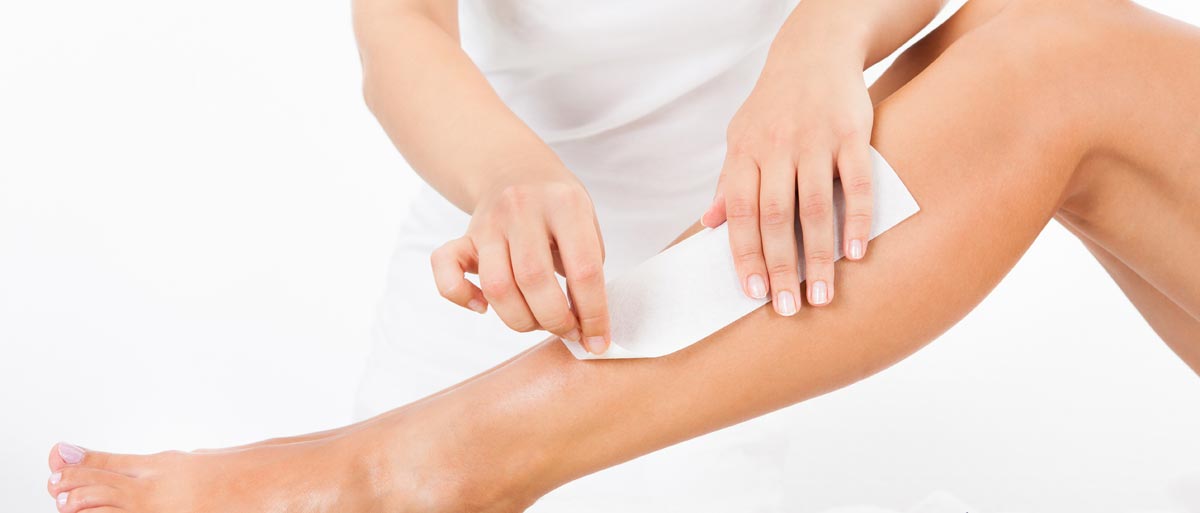
Before puberty, most part of the body in boys as well as girls has a covering of fine hair called vellus. Only the hair on the eyebrows and scalp are longer and thicker.
At puberty, sex hormones called androgens are released inside the bodies of both girls and boys, although their level is higher in boys than in girls. The most important of these androgens is testosterone.
These hormones stimulate growth of hairs around the genitals i.e. pubic hair and in the armpits.
In boys as well as girls, the hair on the arms and legs becomes longer and darker, but, this change is more prominent in boys.
Many girls decide to remove hair in the armpits arms and legs using a razor or, creams or by waxing. However, some girls prefer to retain their body hair, which is also normal personal choice.
Hair in the armpits and in pubic region when kept clean and trimmed, help in retaining body odour which plays important role in sexual arousal of the partner.
In boys, hair appears on the face, chest and sometimes even on the back. Girls get hair on the areola around the nipples, which is perfectly normal.
| | |